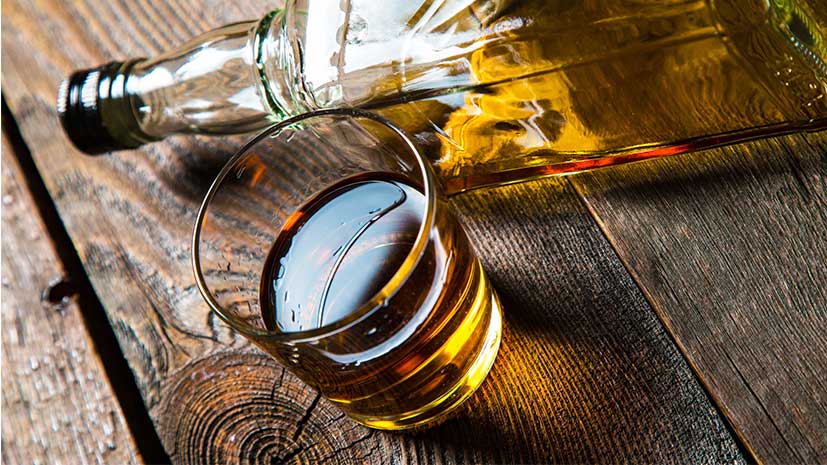When people want to relax or celebrate, they often turn to alcohol. This legal substance is one of the most popular drugs in the world.
While drinking alcohol might seem normal, it poses serious risks to individuals and society at large. In fact, many experts claim alcohol is more dangerous than heroin, cocaine, and other illegal substances. Here’s why.
Alcohol Is The Most Harmful Drug To Society
According to the National Institute on Alcohol Abuse and Alcoholism (NIAAA), about 95,000 Americans die of alcohol-related causes every year. That makes alcohol the nation’s third-leading preventable cause of death.
Although many people know alcohol is dangerous, they often assume it’s less dangerous than illegal drugs like heroin and cocaine.
However, according to a 2010 study published in the medical journal The Lancet, alcohol is the most harmful drug to society. The study looked at 20 of the most popular drugs, examining their effects on health, social behavior, relationships, the economy, and the environment.
Using this information, the researchers rated the drugs on a scale developed by the Independent Scientific Committee on Drugs (ICSD). They gave each drug a “harm score” ranging from 0 (no harm) to 100 (greatest possible harm).
Alcohol’s Popularity Plays A Role
Alcohol was deemed the fourth most dangerous drug to individuals after heroin, crack cocaine, and crystal meth. However, while those three drugs may pose more serious health risks than alcohol, they’re less popular. That means they pose less of a threat to society at large.
Because alcohol is so widely used, it ranked as the most dangerous drug to society, with an overall harm score of 72.
Overall Harm Scores Of Other Drugs
The overall harm scores for the other 19 drugs in the study were:
- heroin: 55
- crack cocaine: 54
- crystal methamphetamine: 33
- powder cocaine: 27
- tobacco: 26
- amphetamine (speed): 23
- cannabis (marijuana): 20
- gamma-hydroxybutyrate (GHB): 18
- benzodiazepines: 15
- ketamine: 15
- methadone: 14
- mephedrone: 13
- butane: 10
- khat: 9
- ecstasy: 9
- anabolics steroids: 9
- lysergic acid diethylamide (LSD): 7
- buprenorphine: 6
- psilocybin mushrooms (magic mushrooms): 5
According to this scale, alcohol is nearly three times as dangerous as powder cocaine or tobacco.
Dangers Of Alcohol Use
Alcohol is a toxin that can take a serious toll on your health. According to the Centers for Disease Control (CDC), frequent drinking raises your risk of the following health problems:
- liver disease
- high blood pressure
- heart disease
- stroke
- digestive issues
- cancer of the breast, liver, mouth, throat, esophagus, voice box, colon, and rectum
- weakened immune system
- memory problems, including dementia
- mental health problems, including anxiety and depression
- alcohol poisoning (also called alcohol overdose)
- miscarriage, stillbirth, or fetal alcohol syndrome if you drink while pregnant
Accidents & Risky Behaviors
Because alcohol impairs your judgment and coordination, frequent drinkers face a higher risk of falls, drownings, motor vehicle crashes, and other accidents.
They’re also more likely to commit violence (including sexual assault and homicide) and to engage in risky sexual behaviors that can lead to sexually transmitted diseases and unwanted pregnacy.
Alcohol Use Disorder
Regular drinking can also lead to alcohol use disorder (also called alcohol addiction). This disease makes you feel unable to stop drinking. It can lead to damaged relationships, job loss, homelessness, and other life challenges.
Economic Damage
In addition, according to the CDC, alcohol abuse hinders the American economy due to issues such as:
- a loss in workplace productivity
- expenses to treat alcohol-related health problems
- losses from alcohol-related motor vehicle crashes
- law enforcement expenses for alcohol-related crimes
Environmental Impact
Alcohol has a significant impact on the environment. Since so many people drink alcohol, it takes a significant amount of water, land, energy, and other resources to produce and distribute the drug.
How To Avoid The Dangers Of Alcohol
The only way to avoid the dangers of alcohol is to stop drinking. You can also minimize alcohol-related risks by drinking in moderation.
The NIAAA defines moderate drinking as having 1 drink or less per day for women and having 2 drinks or less per day for men. A “drink” is any beverage that contains about 14 grams of pure alcohol. The less you drink, the better.
If you feel unable to control your alcohol use, you may have alcohol addiction. Common symptoms of this disease include:
- frequent cravings for alcohol
- loss of interest in activities once enjoyed
- loss of motivation
- avoidance of family and friends
- tolerance (needing increasingly larger or more frequent drinks to feel the desired effects)
- physical dependence (experiencing withdrawal symptoms, such as anxiety and nausea, when you don’t drink alcohol)
Like other types of drug addiction, alcohol addiction requires professional treatment.
If you or someone you love feels unable to stop drinking, please reach out to Northeast Addictions Treatment Center. Our board-certified healthcare providers offer mental health counseling, medication-assisted treatment, and other personalized, evidence-based services to help you or your loved one stay sober.
Keep Reading:
- What Causes Alcohol Addiction?
- How Long Does Alcohol Stay In Your System?
- How Does Alcohol Affect Your Life?
- What Is Wet Brain?
- Dangers Of Drinking Alone
- Dangers Of Drinking Alcohol Daily
Sources:
Centers for Disease Control and Prevention — Alcohol Use and Your Health
Centers for Disease Control and Prevention — Excessive Drinking is Draining the U.S. Economy
National Institute on Alcohol Abuse and Alcoholism — Drinking Levels Defined






